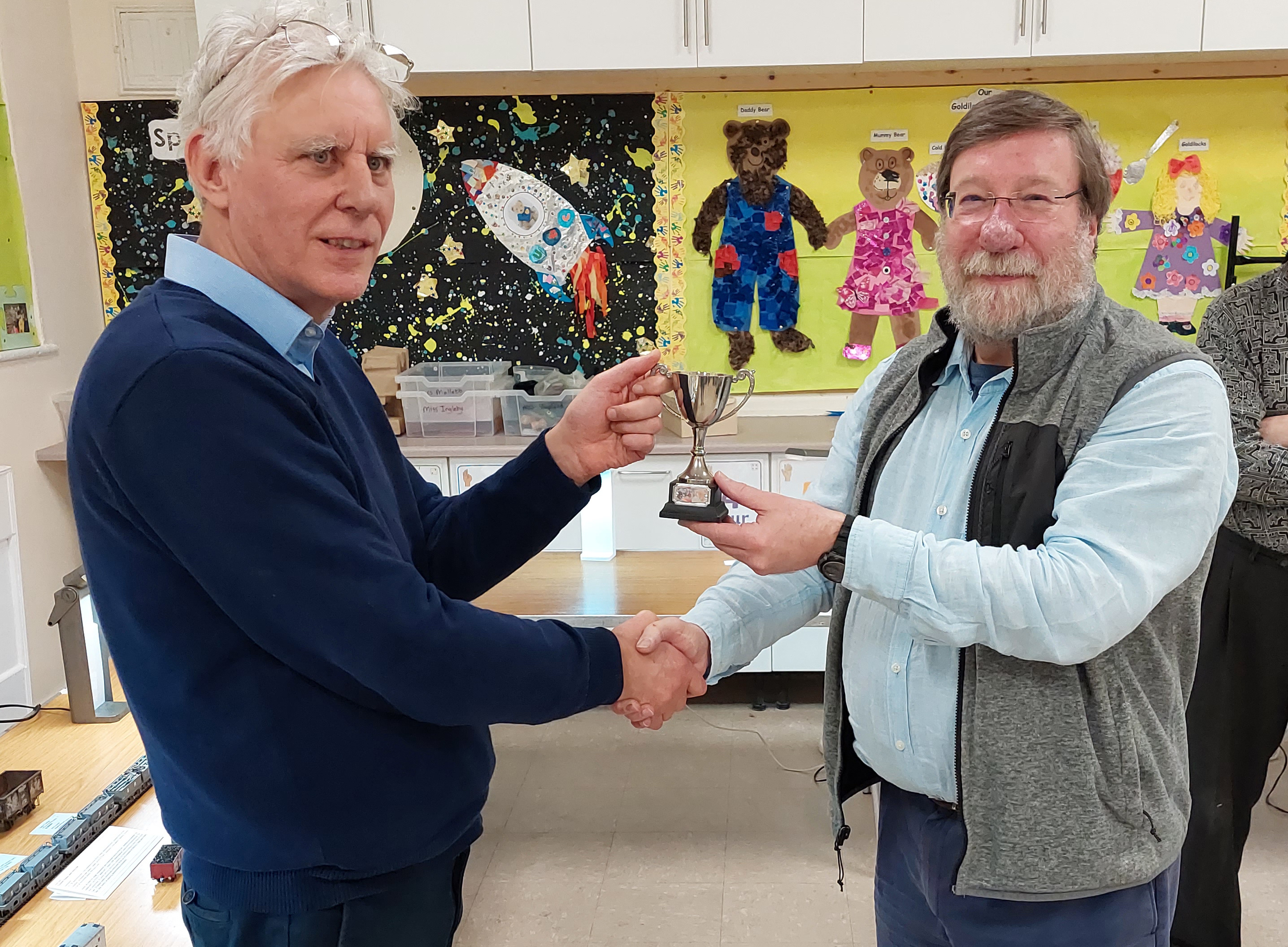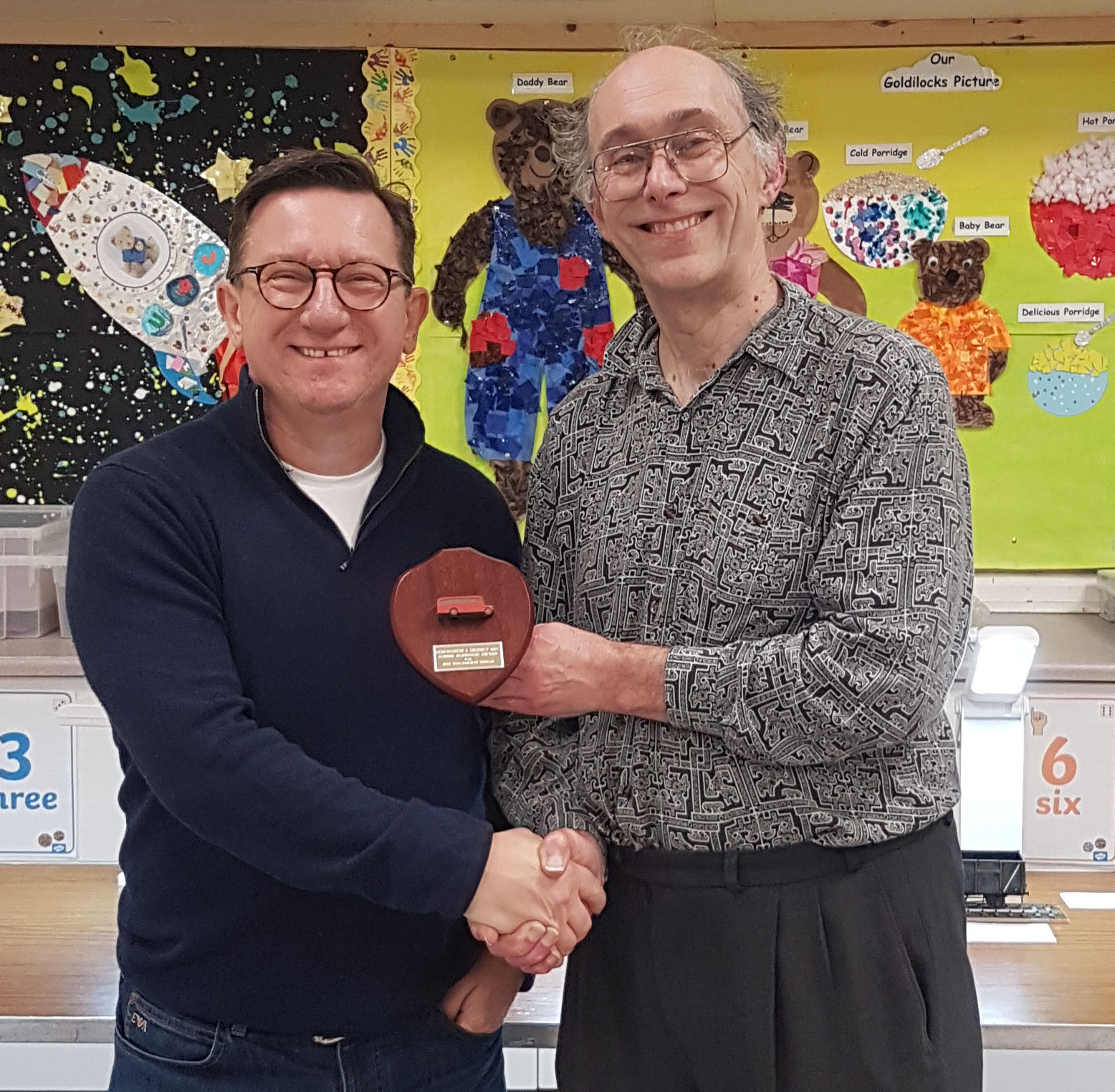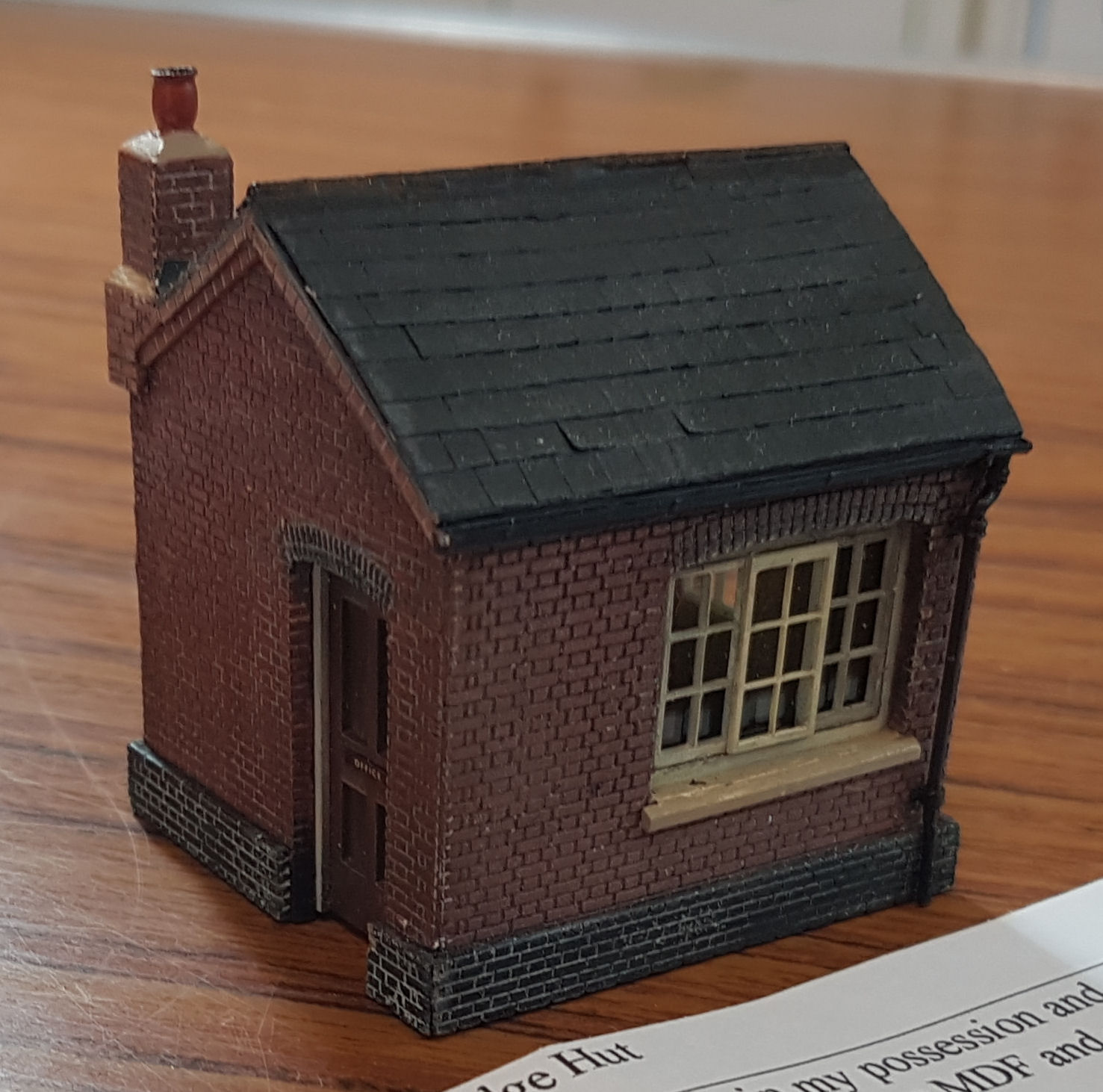Sidebar
Wheeltapper Competition 2023
The Wheeltapper 2023 competition took place on Friday March 24th. This year we were delighted to invite Tony Sheffield from Brassmasters to judge the competition. Tony gave an interesting talk on how Brassmasters started, how the company evolved over the years, and future plans for new kits. Brassmasters are manufacturers of high quality model railway kits and accessories, primarily in 4mm scale.
Wheeltapper Trophy
Tony presented the Wheeltapper trophy for the best model out of all the rolling stock categories to Mick Moignard for his HO Scale, HOn3 gauge model of locomotive #453 of the Denver and Rio Grande Western, a K-27 class 2-8-2 “Mikado” type steam locomotive, which operated on the narrow gauge system.
The K-27 class were 3 ft narrow gauge locomotives built for the Denver and Rio Grande Railroad by the Baldwin Locomotive Works in 1903. Known by their nickname “Mudhens,” they were the first and the most numerous of the four K classes of Rio Grande narrow gauge engines to be built. Of the original fleet of 15 locomotives, two survive to this day and operate on heritage railways in the United States.
 #453 is represented as seen in 1951, when it was in use as the Durango switcher, with footboards at both ends and a power reverser on the right-hand side and a firehose and toolbox on the cab roof. In 1950 the loco was painted with a lot of silver below the running boards and on the tender frame.
The model is a reworked PSC brass loco, with many changed details for the 1951 timeframe and various missing parts have been replaced. The model shows this in a well-weathered condition with lime streaks from the fastening of new coal boards on the tender matching photographs taken in 1951. The model has DCC sound with the speaker in the smokebox and a full complement of working lights.
#453 is represented as seen in 1951, when it was in use as the Durango switcher, with footboards at both ends and a power reverser on the right-hand side and a firehose and toolbox on the cab roof. In 1950 the loco was painted with a lot of silver below the running boards and on the tender frame.
The model is a reworked PSC brass loco, with many changed details for the 1951 timeframe and various missing parts have been replaced. The model shows this in a well-weathered condition with lime streaks from the fastening of new coal boards on the tender matching photographs taken in 1951. The model has DCC sound with the speaker in the smokebox and a full complement of working lights.
This model also was the overall winner of the steam locomotive category.
Diesel/Electric Locomotives
 The winner of the Diesel/Electric Locomotives category was Gary Day with his BR Class 307 EMU. The BR Class 307 EMUs were built at Eastleigh Works between 1954 and 1956. for services on the Great Eastern Main Line. They were originally bult to work on the 1500 V DC overhead electrification system in use on the Eastern Region suburban lines from Liverpool Street to Shenfield and Southend Victoria. These lines were converted to the dual voltage 6.25 kV/25 kV AC overhead system in the late 1950’s and the units were rebuilt to operate at the new voltages. The model is of a unit in this rebuilt state. The photo shows the Driver Trailer Brake Second (DTBS) at one end of this unit.
The winner of the Diesel/Electric Locomotives category was Gary Day with his BR Class 307 EMU. The BR Class 307 EMUs were built at Eastleigh Works between 1954 and 1956. for services on the Great Eastern Main Line. They were originally bult to work on the 1500 V DC overhead electrification system in use on the Eastern Region suburban lines from Liverpool Street to Shenfield and Southend Victoria. These lines were converted to the dual voltage 6.25 kV/25 kV AC overhead system in the late 1950’s and the units were rebuilt to operate at the new voltages. The model is of a unit in this rebuilt state. The photo shows the Driver Trailer Brake Second (DTBS) at one end of this unit.
The model is a heavily modified Replica Railways 64ft Mk 1 set of suburban coaches with Comet bogies. It is fitted with individual brass handrails, door handles, water filer pipes, MJT ventilators, Laserglaze windows and a Sommerfelt pantograph.
Coaching Stock and NPCS
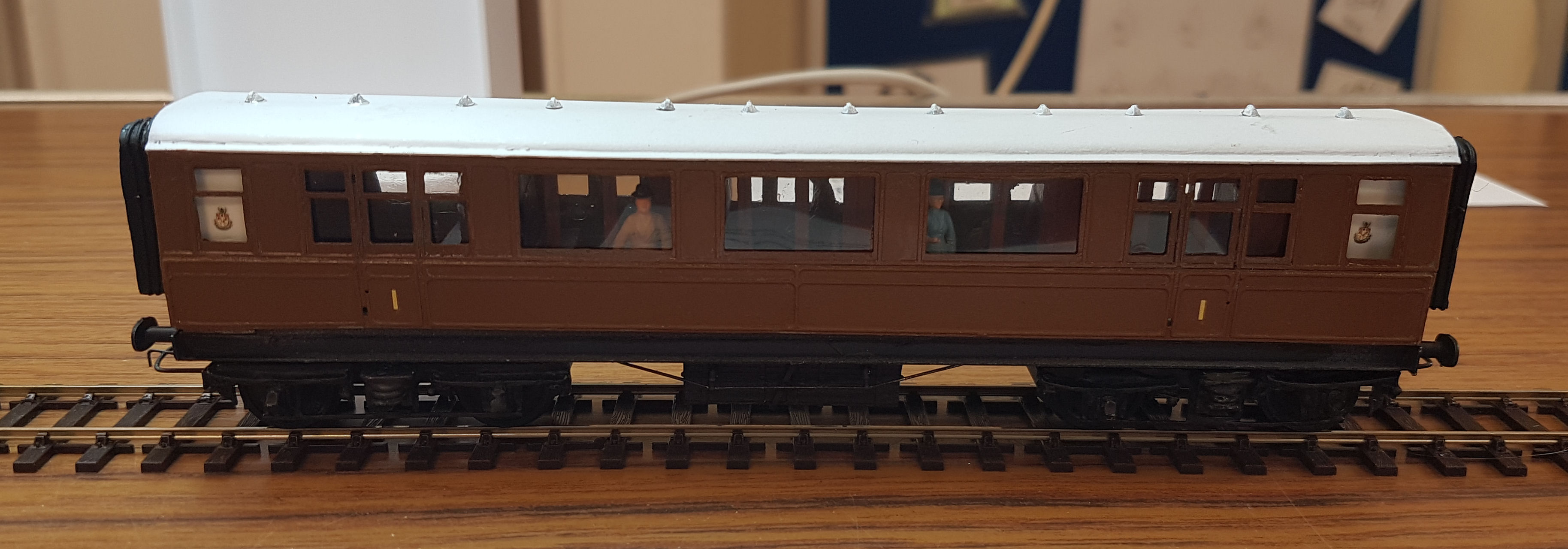 The winner in the Coaching Stock and NPCS category was Mike Jordan for his GCR Parker Gangwayed First coach. Thomas Parker Junior was the Carriage & Wagon Superintendent of the GCR in the 1890s. The Parker ‘gangwayed’ carriages of 1898-99 were aimed at the soon to be opened London Extension and were quite opulent. The gangwayed first coaches were 46’6” long and had five compartments with a lavatory at each end. Many of these lasted into BR days.
The winner in the Coaching Stock and NPCS category was Mike Jordan for his GCR Parker Gangwayed First coach. Thomas Parker Junior was the Carriage & Wagon Superintendent of the GCR in the 1890s. The Parker ‘gangwayed’ carriages of 1898-99 were aimed at the soon to be opened London Extension and were quite opulent. The gangwayed first coaches were 46’6” long and had five compartments with a lavatory at each end. Many of these lasted into BR days.
Mike’s model uses sides, ends and floor only from a Worsley Works kit. The roof is made from a brass sheet to which plasticard guttering has been added. The bogies are from Brassmasters and have been fitted with resin springs and scratch-built brass framing. The interior has been made from card with Comet brass corridor sides. The wheel trusses, battery boxes, corridor connectors, buffers and glazing were added before painting and transfers.
Freight and Engineers Stock
 The winner of the freight and engineers stock category was Roy Norton for his SR Weed Killing Train. This model also won Roy the Chairman's Cup. The photo below shows Roy being presented with the cup by our Chairman, Paul Wright.
The winner of the freight and engineers stock category was Roy Norton for his SR Weed Killing Train. This model also won Roy the Chairman's Cup. The photo below shows Roy being presented with the cup by our Chairman, Paul Wright.
The 1937 SR Weed Killing Train comprised an ex-SECR 6 wheel passenger brake van with double-ended duckets and 6 tenders from ex-SECR B and F class locos, which had been modified to increase their water capacity. The train was capable of spraying 128 miles in one go and covered around 1000 miles a year.
Roy’s 4 mm (OO gauge) representation used a Branchlines brass kit for the van, which he modified as per the prototype. The tenders are 4 x ex-SECR class O1 tenders and 2 x Adams LSWR tenders based on Golden Arrow Products resin kits. The train contains many 3D printed parts including pipe valves, connectors, and rail shields thanks going to James Aitken and David Lane who helped with the production. 3D printed internal pipework and control levers for the van will eventually be fitted too. Thanks also must go to Barry Seal of the 3mm Society for supplying detailed prototype information.
Road Vehicles, Boats, People, Animals etc.
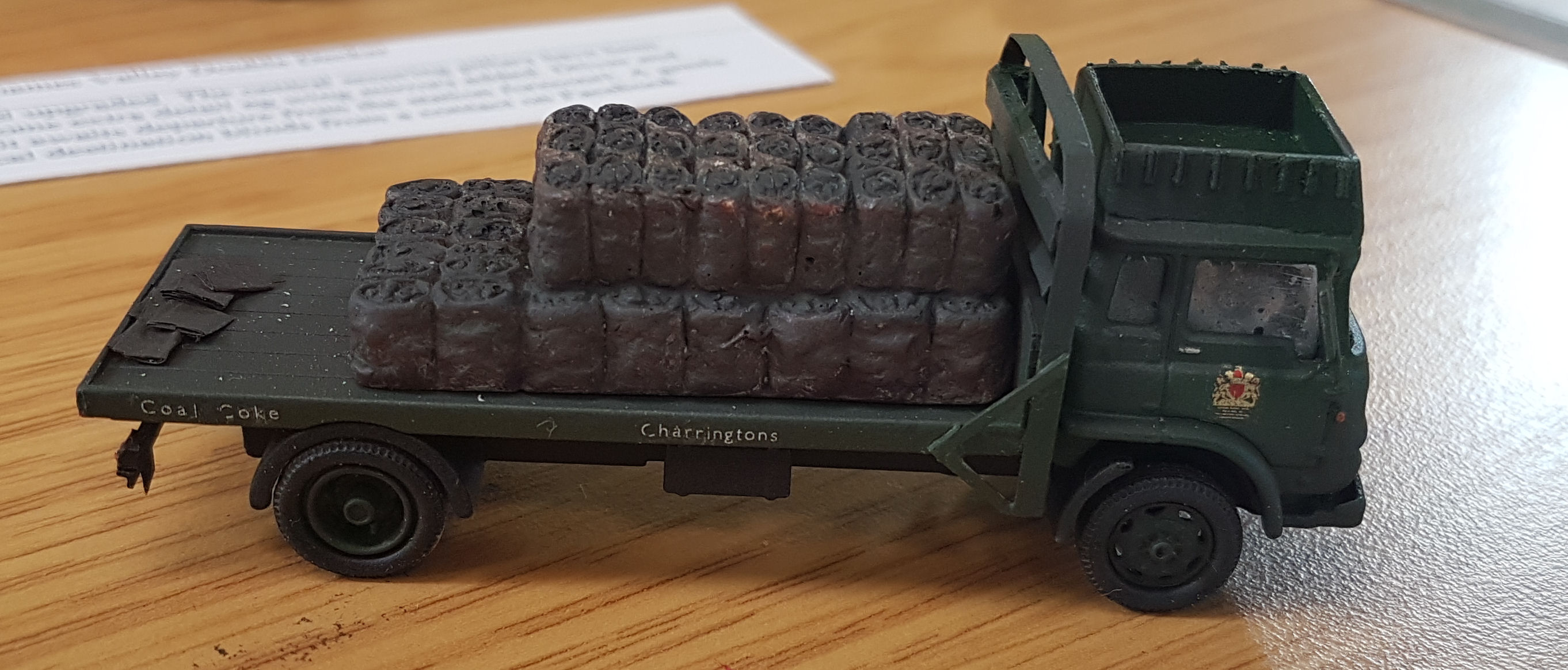 The Robbie Robinson award for the winner of the Road Vehicles, Boats, People, and Animals category went to Gary Day for his model of a Bedford TK Coal Lorry.
The Robbie Robinson award for the winner of the Road Vehicles, Boats, People, and Animals category went to Gary Day for his model of a Bedford TK Coal Lorry.
The Bedford TK was a lorry manufactured by Bedford. Launched in 1960 to replace earlier models, it served as the basis for a variety of derivatives, including fire engines, military, horse carriers, tippers, flatbed trucks, and other specialist utilities. The model was very popular and competed with the likes of the Ford D series.
Gary's model was modified and weathered from an Oxford Diecast Bedford TK “Chipperfield Circus” Lorry. It has been fitted with a scratch-built top-box, trailer end and wing mirrors. It has been lettered using Fox transfer letters, and is crewed by a Preiser driver and Harburn Hobbies coal load.
Scenic Models: Buildings, Trees, Signals etc
The winner of the Jack Kine Trophy for Scenic Models: Buildings, Trees and Signals was Tim Peacock for his model of a GW Weighbridge Hut. The details used for the model were taken from plans in Tim’s possession and photos of a similar example at Toddington. The building itself was laser cut from MDF and Perspex and was coloured with water colour pencils and then gently weathered.
Okehampton 7mm Wagon Project
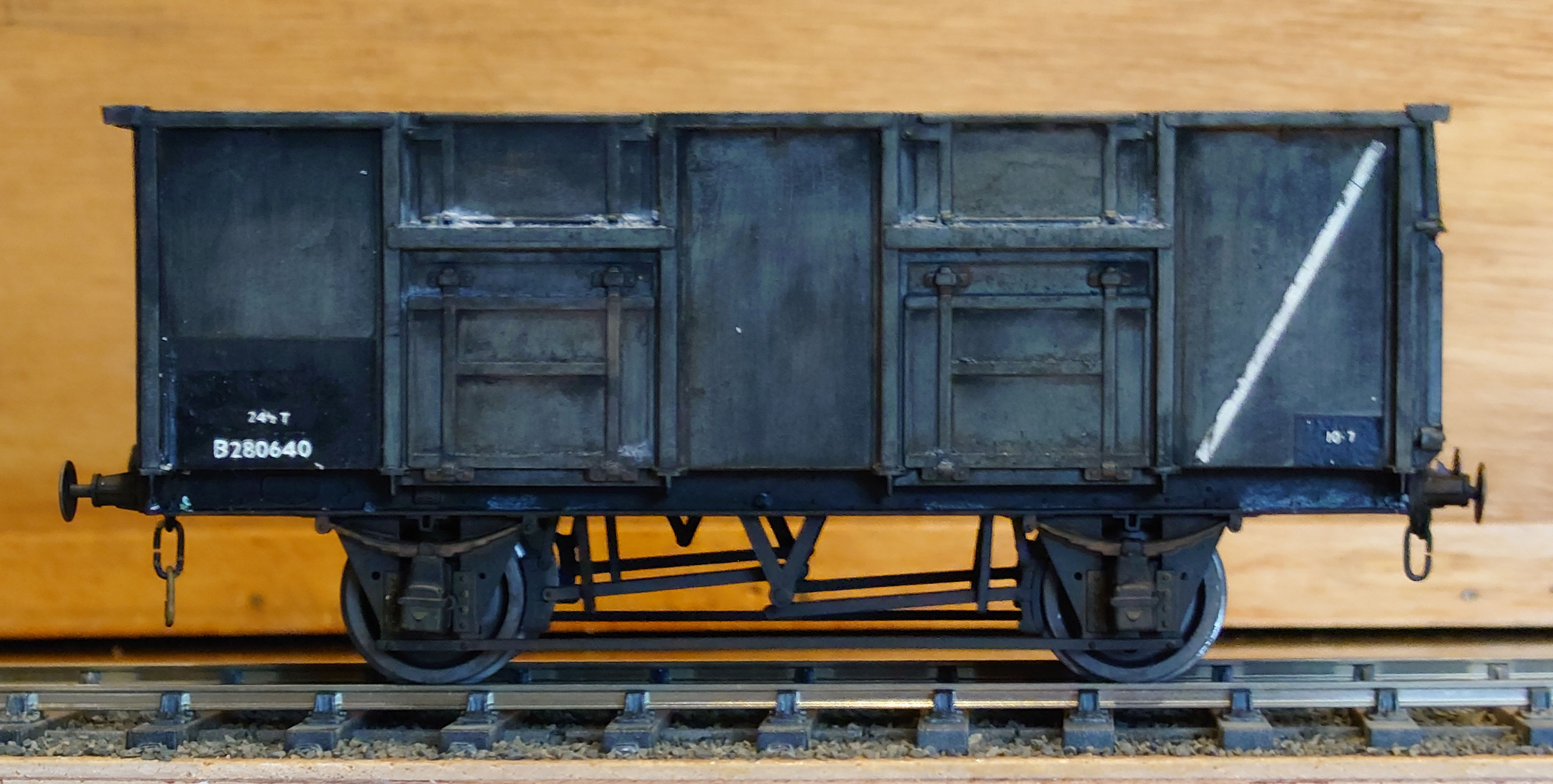 The winner of the Derek Turner Trophy for the Okehampton 7mm Wagon Project was Rob Thompson for his BR 24.5ton Mineral wagon. British Rail introduced this type of large flat bottomed mineral wagon in 1952 and continued building them until 1962 with a total of 3395. They were originally built to replace the pre- nationalisation wooden bodied LOCO coal wagons then in use but they became more widely used for carrying coal to power stations and large works. They were not vacuum braked and this led to the design going out of use in 1981 when BR stopped running unfitted trains.
The winner of the Derek Turner Trophy for the Okehampton 7mm Wagon Project was Rob Thompson for his BR 24.5ton Mineral wagon. British Rail introduced this type of large flat bottomed mineral wagon in 1952 and continued building them until 1962 with a total of 3395. They were originally built to replace the pre- nationalisation wooden bodied LOCO coal wagons then in use but they became more widely used for carrying coal to power stations and large works. They were not vacuum braked and this led to the design going out of use in 1981 when BR stopped running unfitted trains.
Aylesbury Town 4mm Model Project
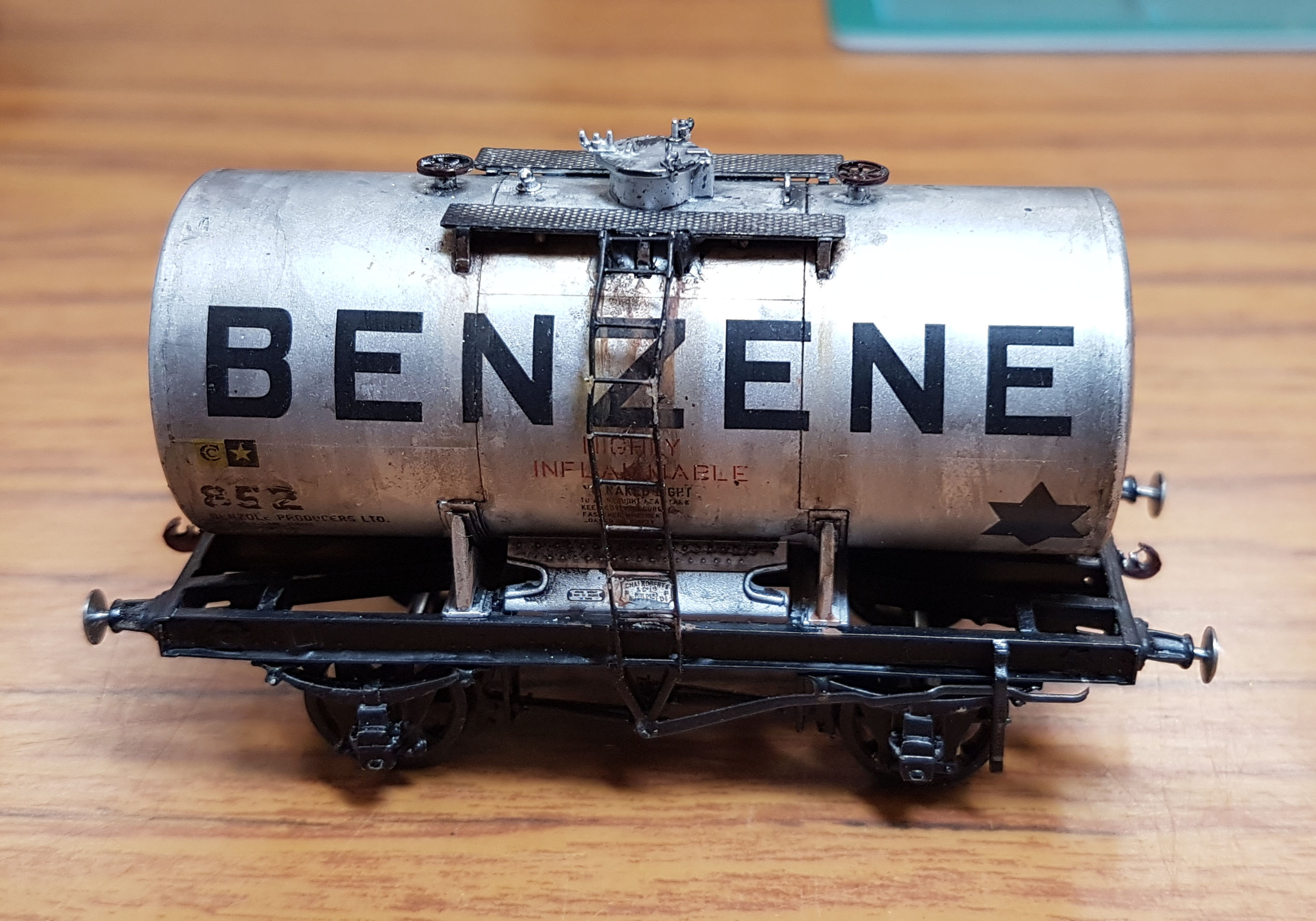 The winner of the Robin Lane Memorial Trophy for the best Aylesbury Town 4mm Model was Ian Gearing for his model of a Class B anchor-mounted tank wagon. The type was built by Charles Roberts in the 1950s as a 20 ton vacuum braked tank wagon for transporting heavy oils. The model used the body from a Bachmann model with a Rumney Models chassis, P4 wheels and sprung buffers. The model has been lightly weathered using acrylic paints.
The winner of the Robin Lane Memorial Trophy for the best Aylesbury Town 4mm Model was Ian Gearing for his model of a Class B anchor-mounted tank wagon. The type was built by Charles Roberts in the 1950s as a 20 ton vacuum braked tank wagon for transporting heavy oils. The model used the body from a Bachmann model with a Rumney Models chassis, P4 wheels and sprung buffers. The model has been lightly weathered using acrylic paints.
Aylesbury LNWR Model Project
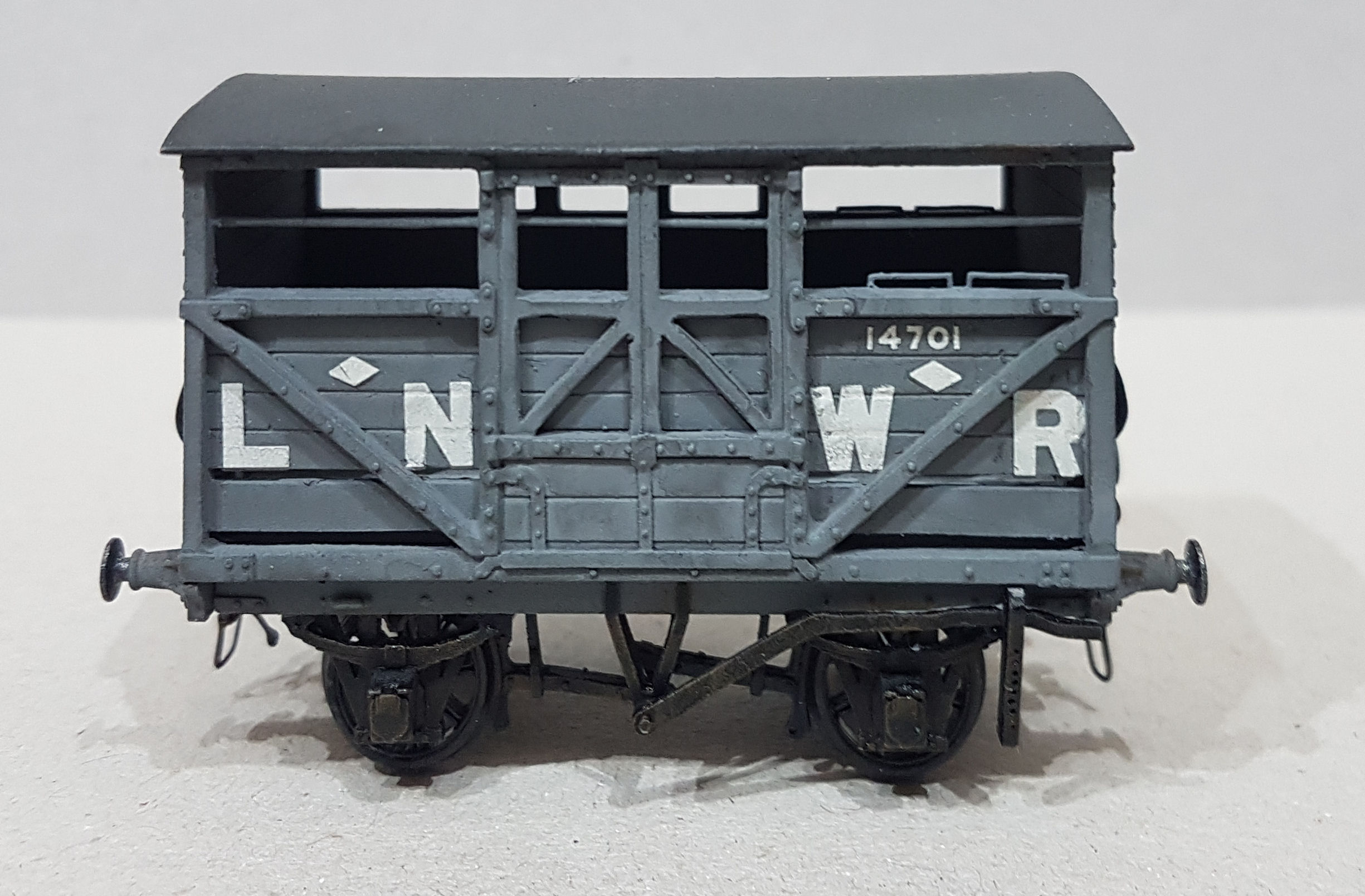 The winner of the category for best model for the club’s EM gauge model of Aylesbury LNWR was James Aitken for his LNWR Cattle Wagon. The model was constructed from a whitemetal kit with etched screw couplings from Masokits. The roof has been cut from a sheet of brass which was shaped in a set of rolling bars.
The winner of the category for best model for the club’s EM gauge model of Aylesbury LNWR was James Aitken for his LNWR Cattle Wagon. The model was constructed from a whitemetal kit with etched screw couplings from Masokits. The roof has been cut from a sheet of brass which was shaped in a set of rolling bars.

